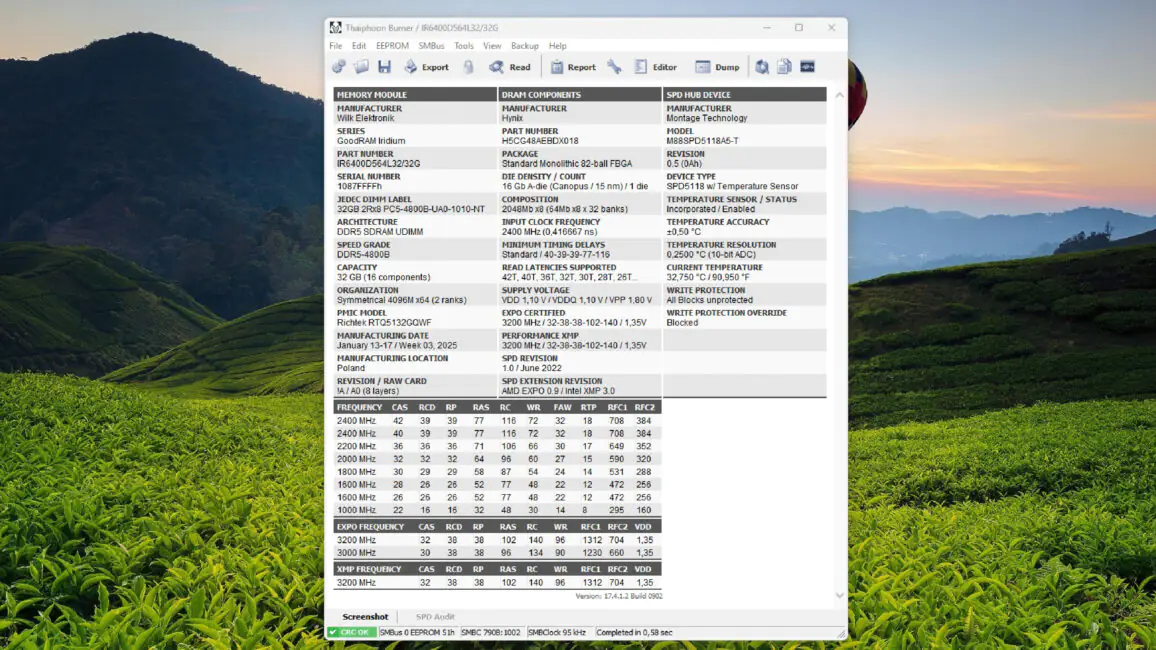© ROOT-NATION.com - Use of content is permitted with a backlink.
There are three reasons why I believe the IRDM Black DDR5 6400MHz 64GB is RAM designed specifically for work, not gaming. While its design gives you an initial hint of these reasons, a first glance doesn’t fully reveal its advantages or demonstrate this specialization in an honest way.
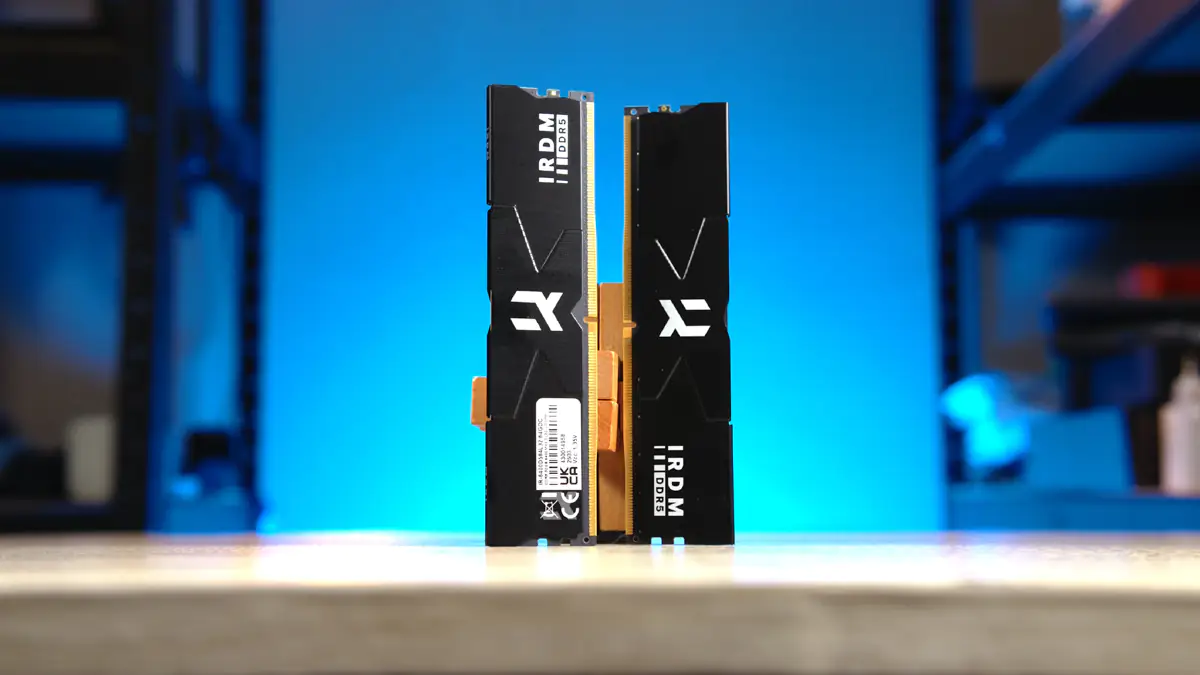
Technical characteristics
- Capacity: 2×32 GB
- Frequency: 6400 MHZ
- Format: UDIMM DDR5
- Voltage: 1,35 В
- Delays: CL32
- Chips: Hynix A-Die
- Warranty: lifetime
Video about IRDM Black DDR5 6400MHZ 64GB

Price and specifications
The price of my specific kit, IR-6400 D564 L32 /64GDC, is around $325 or €313 in official stores. This is a 64GB, dual-rank set with a 6400 MHz frequency, 32-38-38 timings, and 1.35V voltage. It supports multiple AMD Expo profiles – 6000-30-38-38 and 6400-32-38-38 – as well as at least one Intel XMP profile – 6400-32-38-38.
These kits are also available in frequencies ranging from 5600 to 6800 MHz, with timings as low as CL30, and the voltage can go up to nearly 1.5V.
Design, case
So, why is the IRDM DDR5 Black 64GB 6400MHz RAM built for work? First, it’s the design. The design is either impressive or plain and uninspiring, depending on whether you want RGB lighting on your RAM. Goodram offers models with RGB, but this isn’t one of them. However, this is one of those cases where even a simple metal heatsink can add a bit of “style,” to borrow the term.
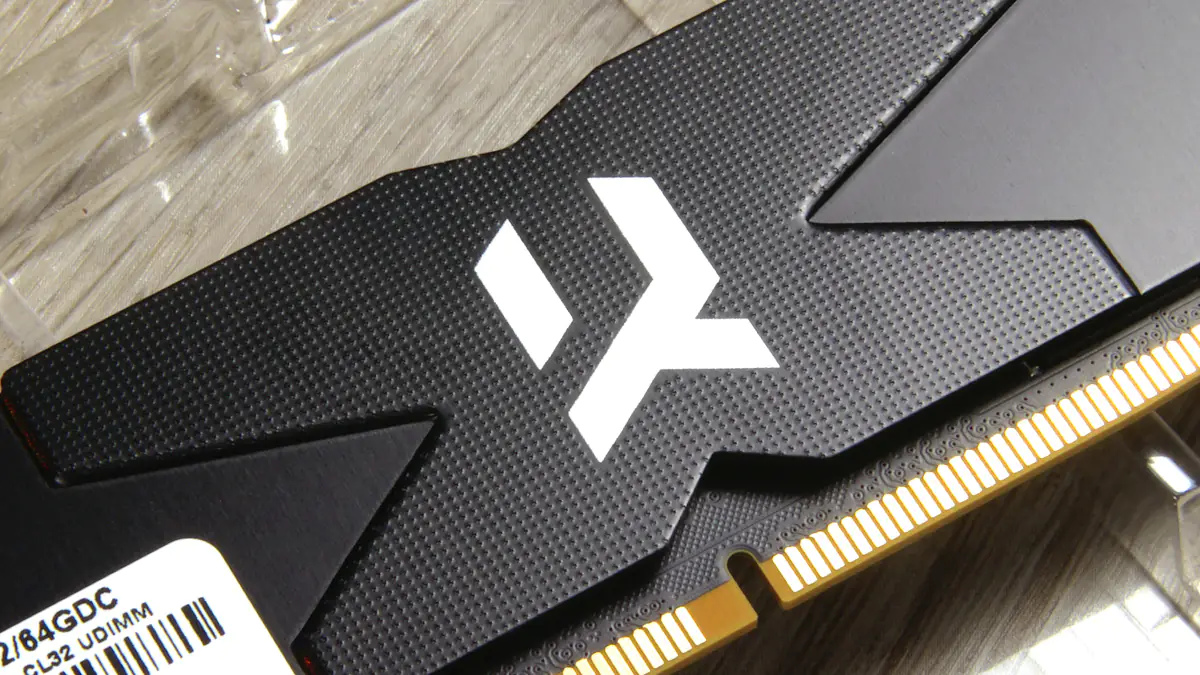
And yes, for DDR5, heatsinks are highly recommended if we’re talking about memory with speeds above 4800 MHz. The same reason why I don’t test PCIe 4.0 or faster M.2 drives without heatsinks – they simply overheat, as they aren’t designed to operate without proper cooling. Even the IRDM Black DDR5 6400MHz 64GB reached 61°C during the MemTest86 test.
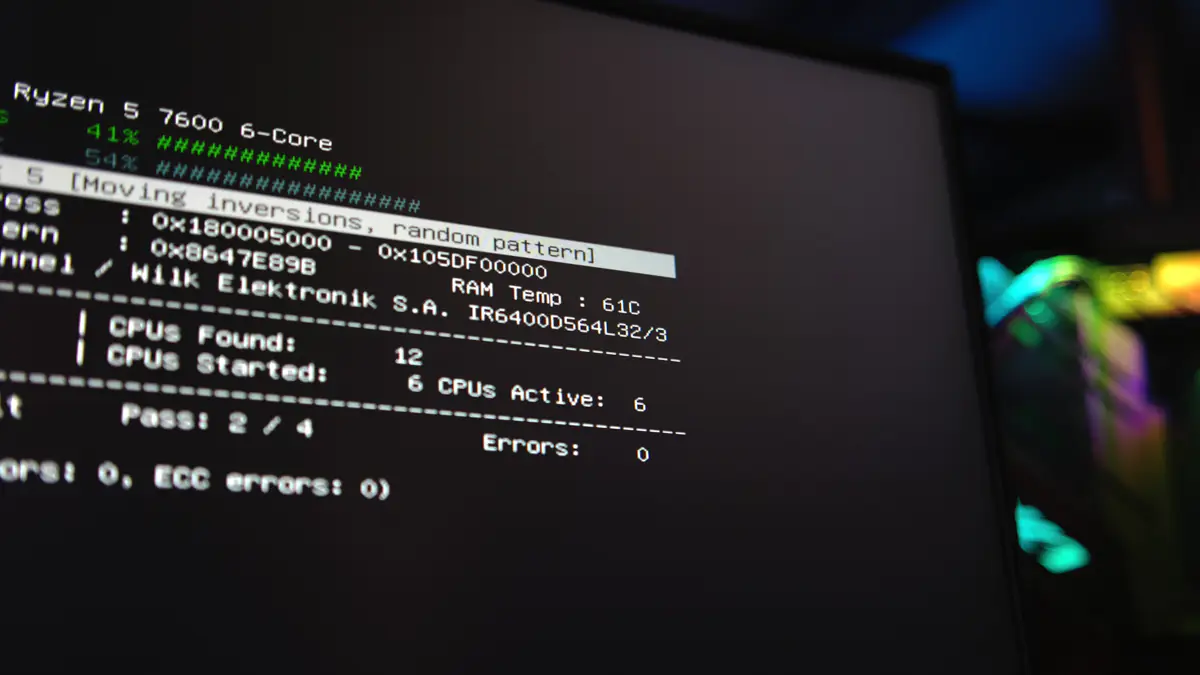
The same applies here. Additionally, DDR5 requires a PMIC (Power Management Integrated Circuit) or a power management chip. It’s a sensitive component that used to be located on the motherboard, and it’s responsible for powering the RAM, so it can get hot as well. It’s also a good idea to cover it with a heatsink.
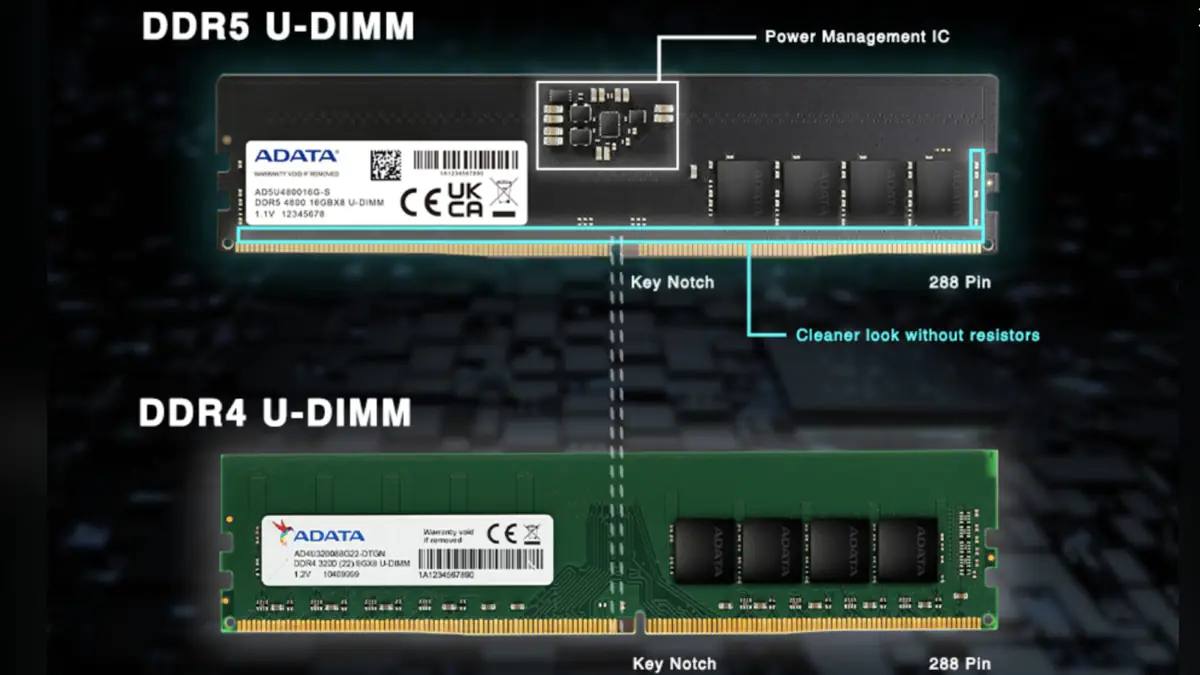
Another advantage is compatibility. Not long ago, I reviewed a case, not even a MicroITX, but a Mini Tower – the Cougar Uniface Mini RGB – where installing a top-mounted cooler reduced the clearance for RAM. The height of the IRDM DDR5 Black 64GB 6400MHz is 32mm, which helps ensure better compatibility in such cases.
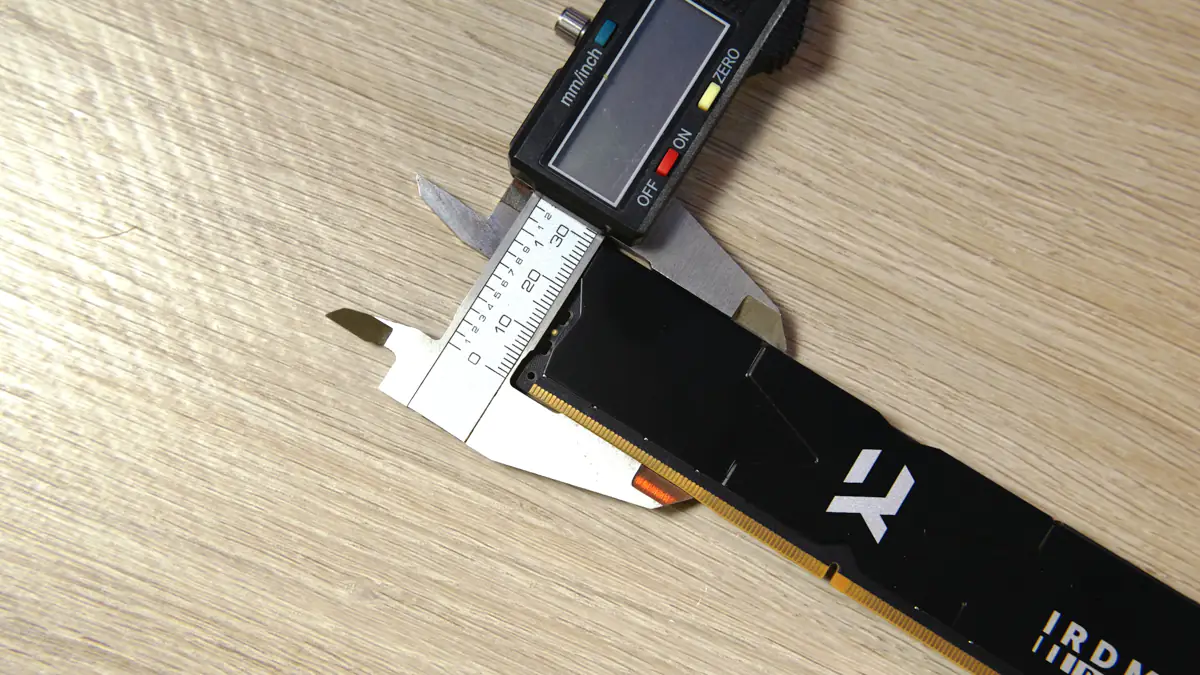
In other words, low-profile RAM is important if you have specific build requirements. However, it’s also more expensive because these specific needs are the complete opposite of popular demands, leading to lower demand and less production. This doesn’t make it overly expensive, as the lack of lighting helps lower the price, but it also doesn’t make it cheap. Therefore, the price is generally justified.
Design again
So, the first reason is design. The second reason is… also design, but not where you might think. The thing is, the label on the IRDM Black DDR5 6400MHz 64GB is applied to the back of the module. I didn’t notice this for quite some time until I saw a video by Linus, where he mentioned that RAM labels always go on the side opposite to where we usually look.
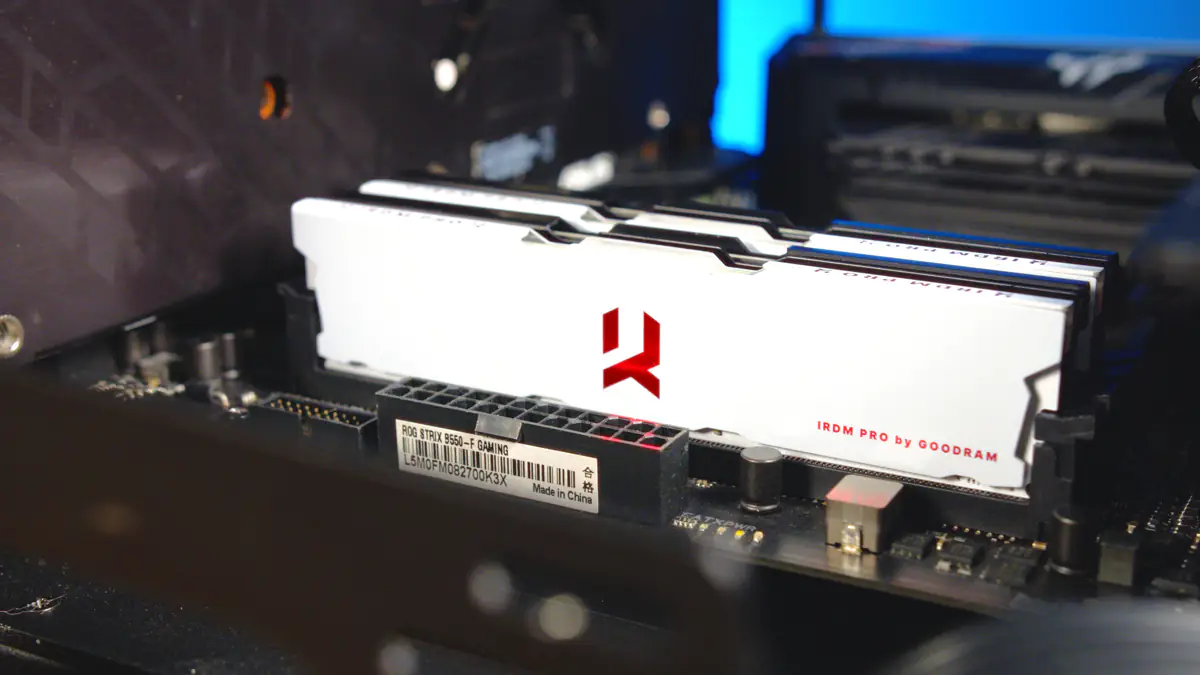
And how do we usually look? At a 45-degree angle to the cooler, right? Well, with all the RAM I can remember, including Goodram, the label was not visible at that angle. With the IRDM Black DDR5 6400MHz 64GB, it’s the opposite. Of course, the label can be reapplied, and perhaps there was some mix-up or oversight at the factory. But for me, this is an indicator that the manufacturer wants to target those for whom aesthetics in builds are less important than performance.
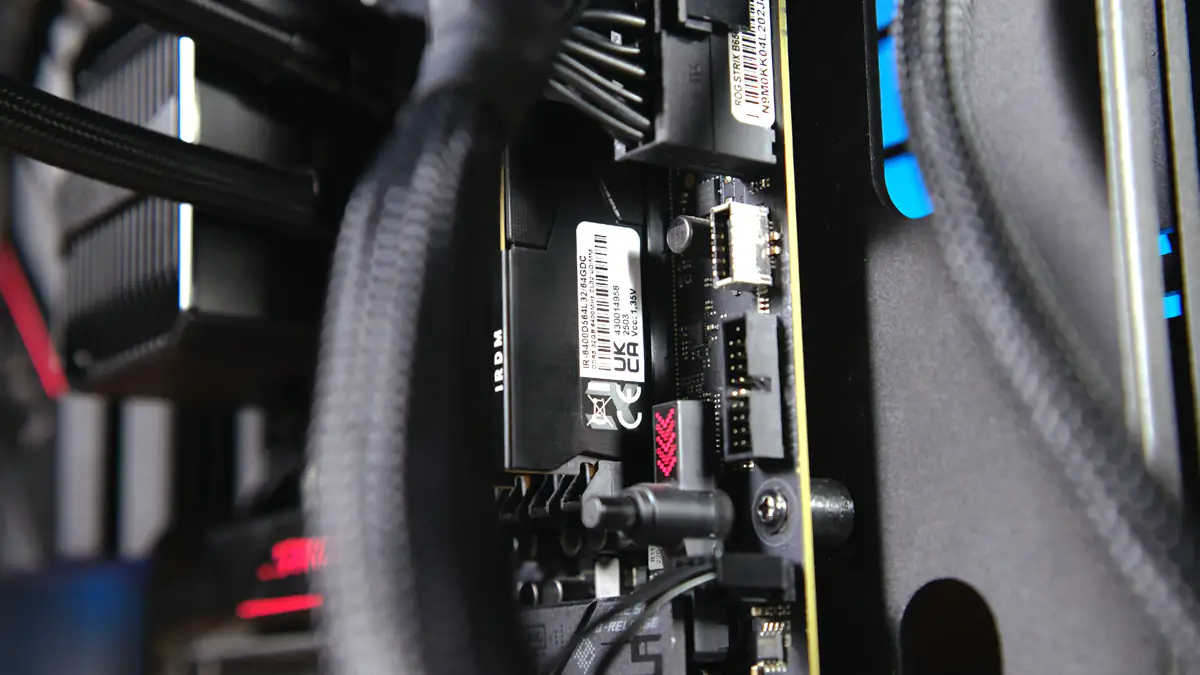
Personally, when I had a work PC with an RTX 3090, where I edited videos, all of my components, except for the RAM, had lighting. And it was turned off everywhere because, honestly, I didn’t need it. Workstations don’t need unnecessary power consumption – they need stable and quiet performance.
Chips
And here, we come to the third reason. It’s the chips – Hynix A-die, which, according to the manufacturer’s claims, are capable of reaching frequencies above 6800 MHz on new systems.
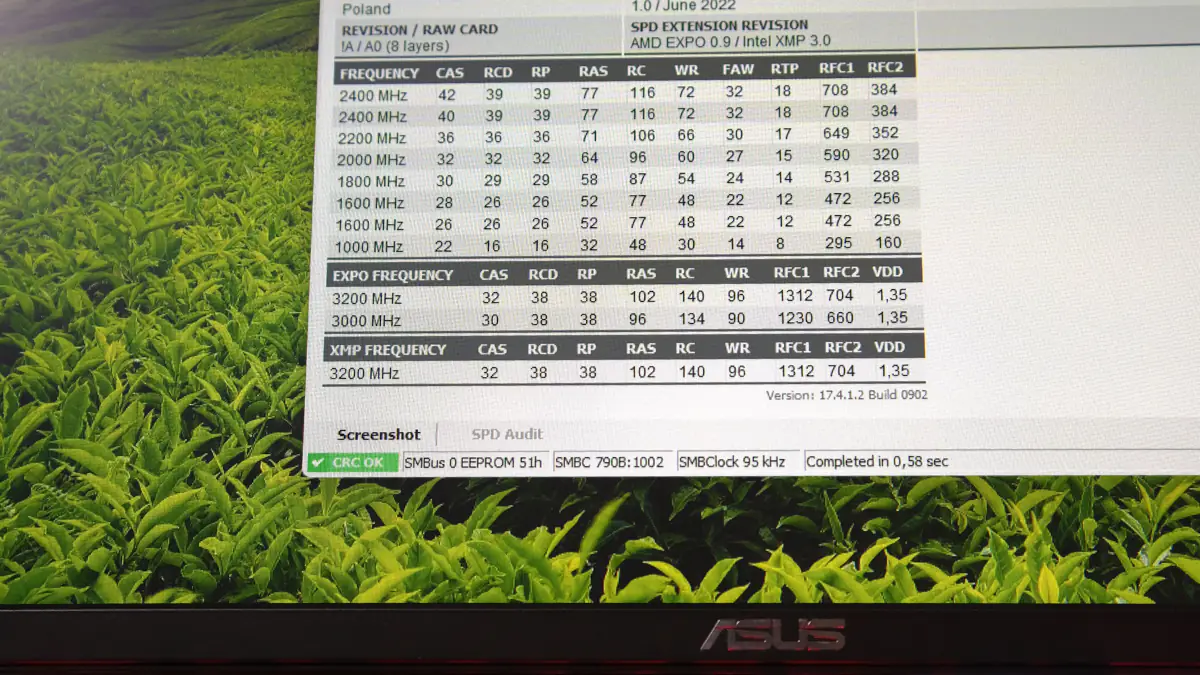
Goodram even has a dedicated post about how they achieved nearly a 10% higher frequency on an Intel Core i9-13900KS and an Asus ROG STRIX Z790-E Gaming Wifi at a voltage of 1.5V.
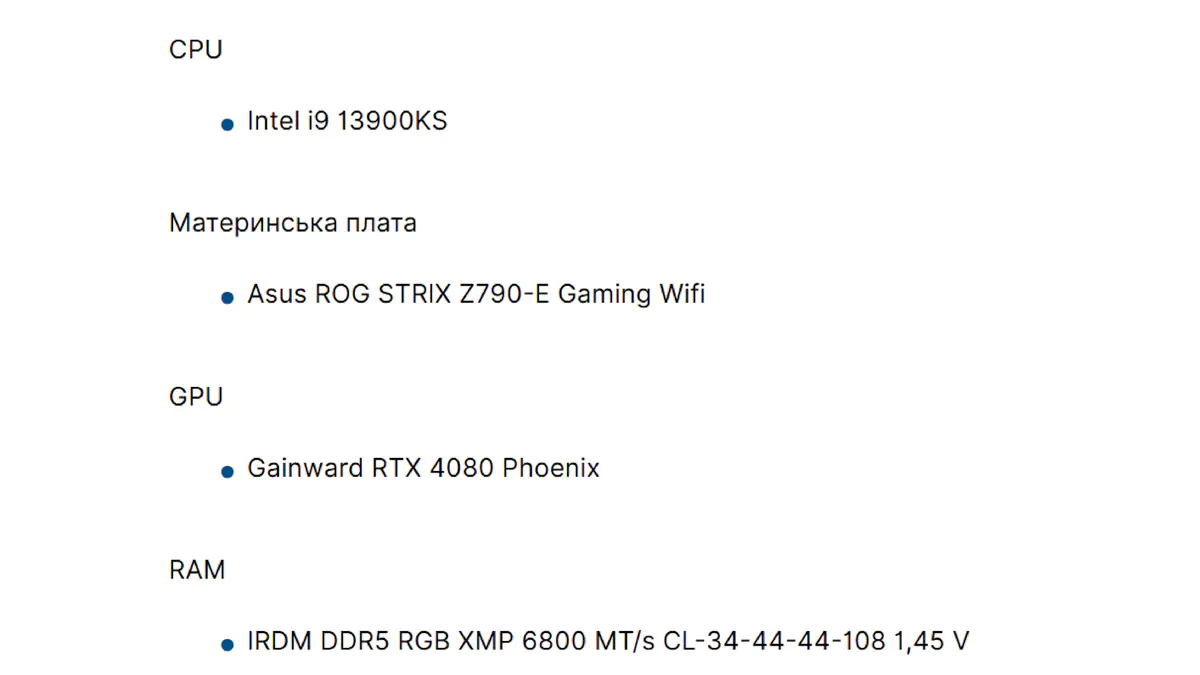
So, with a good system, you can overclock to your heart’s content. But the real question is, will you want to? A good chip offers both great overclocking potential… and stable performance at its base frequency. And stable performance at base frequency is key for workstations – it ensures that you won’t be earning gray hairs from constant crashes.
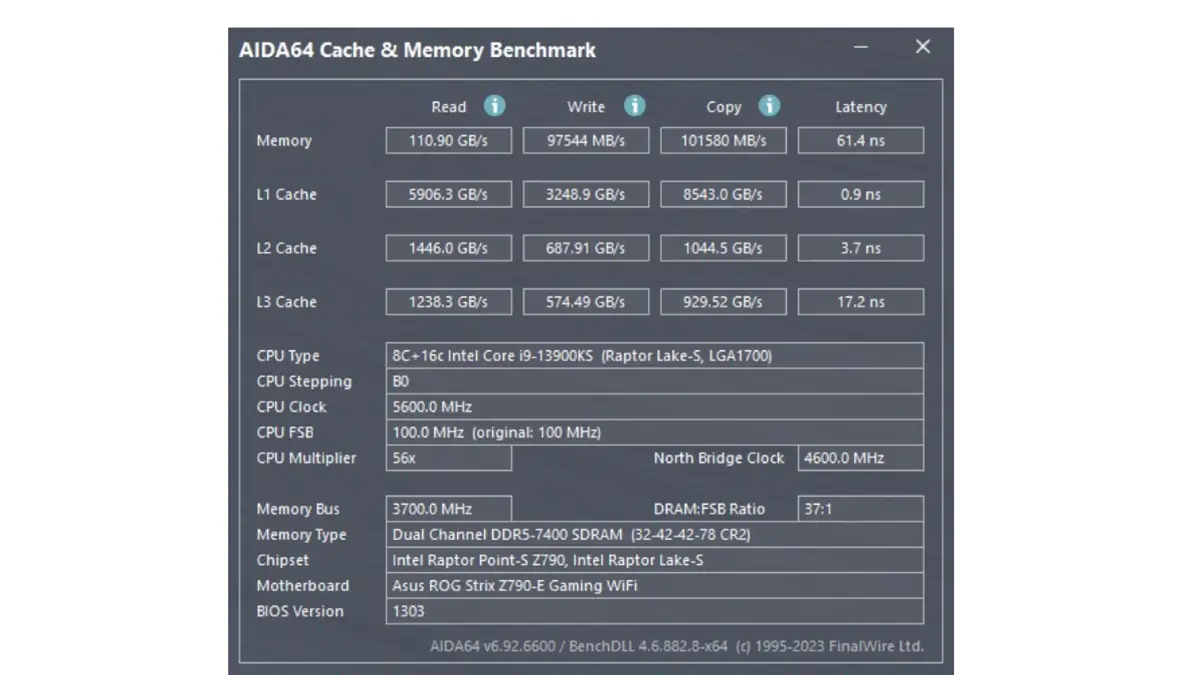
Of course, you can opt for the IRDM Black DDR5 6400MHz 64GB for its overclocking potential and try pushing it to 7400 MHz – if you’re an enthusiast, I’m all for it. However, I can’t guarantee that in work tasks, where my focus lies, trading frequency for stability will actually benefit you.
Conclusions
So, in conclusion, the IRDM Black DDR5 6400MHz 64GB is a very interesting RAM, and what makes it stand out is just how “anti-gamer” it is. At the same time, it’s stylish, efficient, and suitable not only for render stations but also for enthusiasts. So yes, I recommend it.
Read also:
- Three Reasons to Choose Corsair RAM
- Prologix DDR5 6000MHz 32GB RAM Review
- Cougar MX600 Mini RGB Case Review


